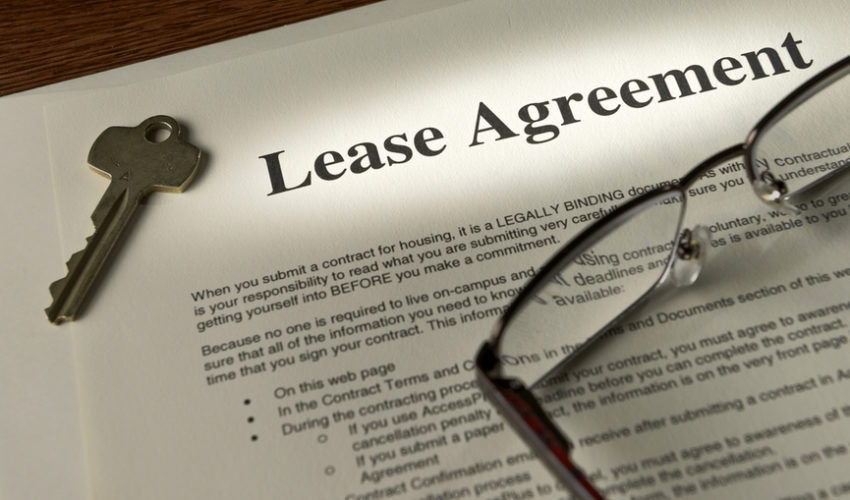Commercial leases usually contain a repairing obligation which sets out the extent of a tenant’s obligations to maintain and repair the property. “Dilapidations” is the term used to refer to the process a landlord needs to follow to recover any loss they may have suffered as a result of the tenant’s failure to return the property to him or her at the end of the lease having reinstated any items of damage or disrepair in accordance with the repairing standard imposed on them. In this article, end of lease dilapidations, we take a look at the process and mechanism involved.
Free Initial Telephone Discussion
For a free initial discussion on how we can help you with end of lease dilapidations, get in touch with us today. We will review your situation and discuss the options open to you in a clear and approachable manner. Early expert legal assistance can help stop matters escalating, saving you money and also avoiding the stress of dealing with these issues on your own. Simply call us on 0345 901 0445 or complete our online enquiry form and a member of the team will get back to you.
What happens at the end of the lease?
Once the lease has expired, the extent of damages to remedy dilapidations is broadly the reasonable cost to the Landlord of doing the works plus loss of rent for the period until the works have been completed.
Any claim has to be reasonable, so if a very minor remedy would cost a sum of money out of all proportion to the actual damage, a Landlord is not entitled to a gratuitous benefit, but rather the Court would look at what the actual difference in value to the premises is.
In any event, there is a statutory provision in Section 18 (1) of the Landlord & Tenant Act 1927, which limits the damages available for breach of a repairing covenant to the diminution in value of the Landlord’s reversion caused by the breach. This basically means that a Court would look at what the diminution in value of the property actually is as a result of the breach of repairing covenant, and any damages would be limited to this sum.
However, the Landlord may be able to additionally recover loss of rent for the duration of the period necessary to carry out the works, and a Landlord would usually need to show that there has been a loss of rent due to the Landlord being unable to re-let the property.
If evidence is available that the property would not have been re-let whatever state it was in, such a claim could not be pursued. Loss of rent does generally fall within the limitation under Section 18 (1) of the LTA 1927.
Landlords are usually able to avoid the statutory restriction by having a specific provision in the Lease to allow them to claim a sum equivalent to the lost rent as a contractual debt, rather than as damages. The same applies to claims for professional fees, for instance, surveyors’ fees and lawyers’ fees. In those circumstances, the fees will not be subject to the cap, but would of course still be subject to an implied term that they have to be reasonable in amount.
What is the process involved of dealing with a dilapidations claim?
In order to protect both the tenant and landlord in the event of a dilapidations dispute and to ensure the claim is successful, a strict process needs to be adhered to., which needs to be followed exactly in order for a dilapidations claim to be successful.
Pre-Action Protocol
Prior to proceedings, there is a set procedure that the court expects the parties involved to follow. This is the ‘Claims to Damages in Relation to the Physical State of Commercial Property at Termination of a Tenancy.’ It also sets out a timetable and creates a channel for the exchange of information during the process. Both parties must comply with the Protocol, irrespective of either party seeking professional advice or not.
Evidence of compliance is important as sanctions can be placed if the court deems either party has not done so. This typically takes the form of a cost order
Schedule of Dilapidations
To start the process, the landlord is required to send what is known as a Schedule of Dilapidations to the tenant. This document sets out the breaches and the work required to rectify any issues with the property and the likely cost of this. As per the Protocol, this should be served in a reasonable time frame post-tenancy. It is suggested that this is sent electronically to allow the tenant to reply.
A Quantified Demand
Alongside any Schedule, the landlord must also send a Quantified Demand within the same reasonable time frame. This needs to set out all of the particulars of the claim, specifically the monetary damages that may be sought as a result of the breach of any obligations. This should be a sum that quantifies the overall loss for the landlord, not necessarily the sum of repairs. It can be inclusive, for example, of the loss of rent in the period following the tenancy in order to conduct repairs.
Tenant Response
Any response from the tenant needs to occur within the same reasonable timeframe following the receipt of the Schedule and Quantified Demand. The response should detail the tenant’s position in a clear and concise manner, but it does not have to address every point made in the documents that they receive within the Quantified Demand. However, it would be ideal in order to establish the true issues between tenant and landlord in the dispute.
The Pre-Action Protocol suggests a meeting between the two parties in the 28 day period after the tenant’s response. At this meeting, the parties should agree to as many of the items being disputed as possible, in order to narrow down the issues and come to a reasonable resolution.
Alternative Dispute Resolution
Both parties must consider whether or not a form of Alternative Dispute Resolution is suitable before taking the matter further. If the issue does progress to litigation, then both parties must show evidence that ADR was reasonably considered.
Litigation should be considered a last resort and compliance with the Protocol will be thoroughly assessed before any costs are awarded.
If the actions taken under the Protocol have not resolved all issues, then legal proceedings will begin.
How we can help
We have a proven track-record of dealing with and advising upon end of lease dilapidations and dilapidation disputes. We will guide you through the process and ensure all checks are carried out swiftly and efficiently and we firmly believe that with the right solicitors by your side, the entire process will seem more manageable and far less daunting.
How to Contact our Commercial Property Solicitors
It is important for you to be well informed about the issues and obstacles you are facing. However, expert legal support is crucial in terms of saving you money and ensuring you achieve a positive outcome.
To speak to our litigation solicitors today, simply call us on 0345 901 0445, or allow a member of the team to get back to you by filling in our online enquiry form. We are well known across the country and can assist wherever you are based. We also have offices based in Cheshire and London.
Disclaimer: This article provides general information only and does not constitute legal advice on any individual circumstances.




Leave a Reply
You must be logged in to post a comment.